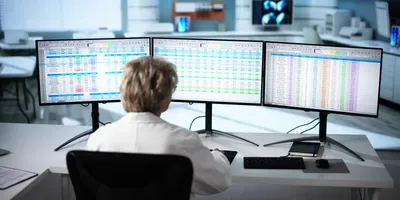Validating instruments is an important part of any lab's quality control process. It involves a series of steps used to test your instrument against the manufacturer’s specifications and ensure that it will perform consistently within certain parameters. Validation enables you to confirm the instrument is suitable for its intended use and is a critical component of quality assurance processes. It is particularly important in highly-regulated industries such as food, medical, and pharmaceutical, and is a requirement of industry regulations such as those set out by the FDA.
Instrument validation can be a time-consuming task, but there are some ways to streamline the process and improve efficiency.
Deciding which instruments need to be validated and when
One key way to save time is to ensure you know which instruments require validation and how often. “Equipment can range from simple to complicated,” explains Ron Raey, founder and CEO of Raeyco Lab Equipment Systems Management Ltd. “Typical equipment that is validated includes fridges, freezers, autoclaves, and environmental chambers. Analytical equipment such as HPLCs, GCs, and spectrophotometers are also validated.” He adds that custom-made equipment should always go through a validation process, as should any equipment or software that will be used in good manufacturing processes.
So, what makes some validation processes more complicated than others? “Mixing and matching manufacturers to make one system would involve a validation process that could be very time consuming,” says Raey. “Including multiple parameters and a variety of set points can also add complexity and time to the process.”
“Ask yourself what the equipment will be used for and validate only those components or processes that will be used on the equipment.”
To comply with internal standards or industry regulations, instruments need to be validated periodically or in relation to certain events. For example, most instruments will be validated after initial installation. Even though it would have gone through the manufacturers’ validation process, an instrument’s performance might be affected by transportation or storage. Equipment might also require validation when moved to a different location, after undergoing maintenance, or when a new method is implemented. Manufacturers’ instruction will often provide recommended validation frequencies and processes.
How to expedite the process of equipment validation
When equipment is validated by a third party, these companies will have the resources and processes necessary to make the validation process quick and painless. However, third-party validation is not always necessary or feasible, and lab staff need to carry out the process themselves. So, how can you make validation as fast as possible?
“Validation is a service that requires extreme attention to detail and is very document intensive.”
Raey’s main advice is to come up with a protocol template that can be used across all types of equipment. “Ask yourself what the equipment will be used for and validate only those components or processes that will be used on the equipment.” Having a well-defined protocol helps to ensure that all steps in the validation process are carried out consistently. This will make it easier and faster to validate instruments, as well as providing a reference document for future validations. Raey also advises not to make tolerance ranges too narrow. “Otherwise, future validations may fail as the equipment ages.”
When validating equipment, it’s vital to keep all steps and results well-documented. “Validation is a service that requires extreme attention to detail and is very document-intensive,” says Raey. “Ensuring that all reporting is accurate and organized is an essential part of the process.” This is especially important from a compliance perspective, with audits requiring the review of validation documentation. Some labs decide to use equipment validation software to help. Benefits of validation software include that it helps you stay on track with scheduled validations, eliminates the need for paper results, and provides an audit trail to comply with relevant regulations.










